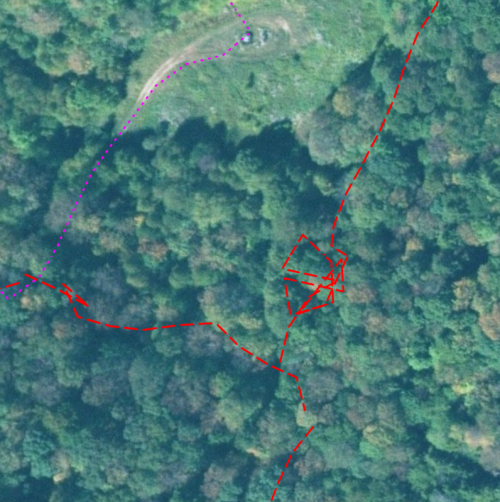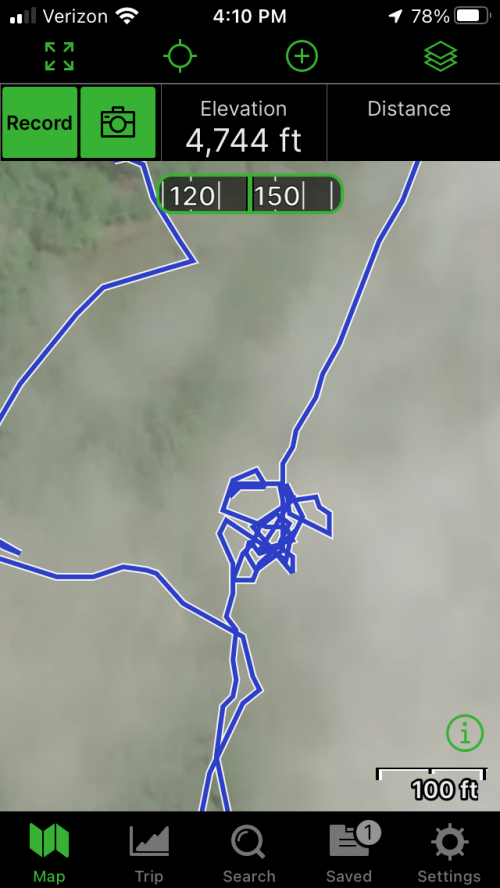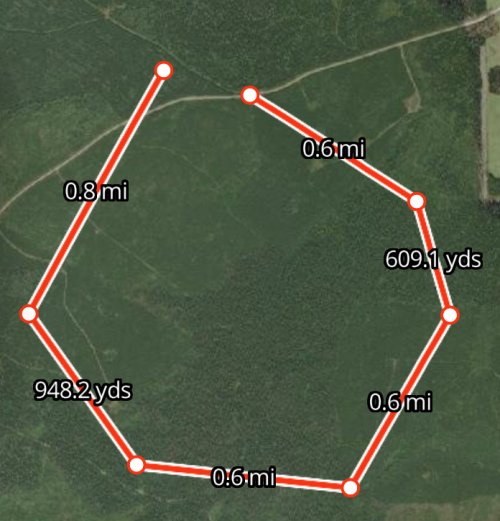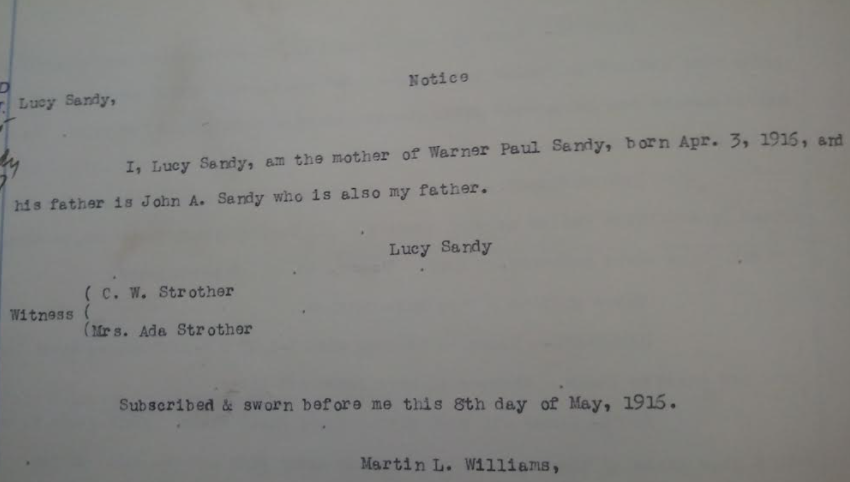RobG
Well-known member
The iPhone GPS can be off too. The loops below are where I stopped to pick some beachnuts along a road. It shows I wandered in an area with 50' diameter, when in reality I never got more than 10' from the east side of the road.
Normally it isn't too bad, but for some reason this place had me bouncing all over even when I was standing still. We were trying to mark the property corners and it was disappointing since you would drop a waypoint and then your position would shift 20' in one direction.
This error is probably the iPhone, not OnX, but it does show the limitations of what you can do.
It is noteworthy that it doesn't bounce around when I was moving. Maybe somebody knows why.

Normally it isn't too bad, but for some reason this place had me bouncing all over even when I was standing still. We were trying to mark the property corners and it was disappointing since you would drop a waypoint and then your position would shift 20' in one direction.
This error is probably the iPhone, not OnX, but it does show the limitations of what you can do.
It is noteworthy that it doesn't bounce around when I was moving. Maybe somebody knows why.







